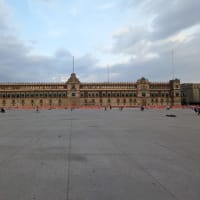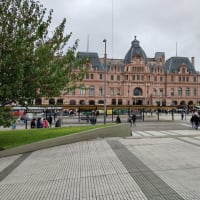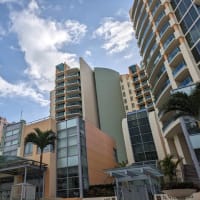40,
39,
38,
38,
37,
36,
35,
34,
33,
32,
32,
31,
30,
29,
28,
27,
26,
25, 24, 23, 22, 21, 20, 19, 18, 17, 16, 15, 14, 13, 12, 11, 10, 9,8,7,6,5,4,3,2,1,0.
CAUSES AND CONSEQUENCES OF RAPID URBAN SPATIAL SEGREGATION
The New Towns of Tegucigalpa, Glenn Pearce-Oroz, Summary, urban special segregation, Honduras, Hurricane Mitch, land market, political and social system, rapidly urbanizing cities, south hemisphere, average annual urbanization rate, around 4 percent per year, 2000 to 2005, two phenomena, social and economic transition, the main issues, informal settlements, marginal neighborhoods, which accelerates further segregation. According to the author, he points out that approximately half of the city is made up of informal settlement, which surrounded, poor quality of services, public networks or services, urban economy, transportation, phenomenon, the anachronistic land registry system, land administration system, restrictive exclusionary natures, the patterns of human settlements, repercussion of the economy, alternatives, outside the formal market, many citizens, two shelters, four, under harsh environments, private toilets, threats of violence, health risk, and so on. construct 59,000 housing units, micro-shelters, low-income residential development, negative effects, the author, two possible scenarios, sleepy, future development, full-time return migration, tree, two dreams, for mitigating, citizens and NGOs, developing countries, globalization, flows of more labor, capital and resources, large inequality, rural areas, Collier 2007, socio-economic inequality, macro, United Nation, enabling, self-help, slum upgrading, Ganesh Nagar D, Mumbai, top-down methods, bottom-up, Mumbai, New York, Tokyo, London, Nijman, sleepy, Housing Co-op, G-Ward, the southern half of Greater Mumbai, the old Native Town, colonial times, the textile industry, the 20th century, pedestrian-filled, shops and stands, single-story, the 390 structures, steel roofs, out in the community, the Slum Rehabilitation Society, Slum Rehabilitation Scheme (SRS), ‘‘Ganesh Nagar D Housing Co-operative’’, government, strong sense of cohesion ,Home Development Finance Corporation, Cordaid, the loan, both approaches, implementations, bottom-up, significant.
計40ページの小論文を書き終えた時の脳内図はこんな感じだった。
ちなみに上の英語はペーパー一枚分の分量。
39,
38,
38,
37,
36,
35,
34,
33,
32,
32,
31,
30,
29,
28,
27,
26,
25, 24, 23, 22, 21, 20, 19, 18, 17, 16, 15, 14, 13, 12, 11, 10, 9,8,7,6,5,4,3,2,1,0.
CAUSES AND CONSEQUENCES OF RAPID URBAN SPATIAL SEGREGATION
The New Towns of Tegucigalpa, Glenn Pearce-Oroz, Summary, urban special segregation, Honduras, Hurricane Mitch, land market, political and social system, rapidly urbanizing cities, south hemisphere, average annual urbanization rate, around 4 percent per year, 2000 to 2005, two phenomena, social and economic transition, the main issues, informal settlements, marginal neighborhoods, which accelerates further segregation. According to the author, he points out that approximately half of the city is made up of informal settlement, which surrounded, poor quality of services, public networks or services, urban economy, transportation, phenomenon, the anachronistic land registry system, land administration system, restrictive exclusionary natures, the patterns of human settlements, repercussion of the economy, alternatives, outside the formal market, many citizens, two shelters, four, under harsh environments, private toilets, threats of violence, health risk, and so on. construct 59,000 housing units, micro-shelters, low-income residential development, negative effects, the author, two possible scenarios, sleepy, future development, full-time return migration, tree, two dreams, for mitigating, citizens and NGOs, developing countries, globalization, flows of more labor, capital and resources, large inequality, rural areas, Collier 2007, socio-economic inequality, macro, United Nation, enabling, self-help, slum upgrading, Ganesh Nagar D, Mumbai, top-down methods, bottom-up, Mumbai, New York, Tokyo, London, Nijman, sleepy, Housing Co-op, G-Ward, the southern half of Greater Mumbai, the old Native Town, colonial times, the textile industry, the 20th century, pedestrian-filled, shops and stands, single-story, the 390 structures, steel roofs, out in the community, the Slum Rehabilitation Society, Slum Rehabilitation Scheme (SRS), ‘‘Ganesh Nagar D Housing Co-operative’’, government, strong sense of cohesion ,Home Development Finance Corporation, Cordaid, the loan, both approaches, implementations, bottom-up, significant.
計40ページの小論文を書き終えた時の脳内図はこんな感じだった。
ちなみに上の英語はペーパー一枚分の分量。




















※コメント投稿者のブログIDはブログ作成者のみに通知されます